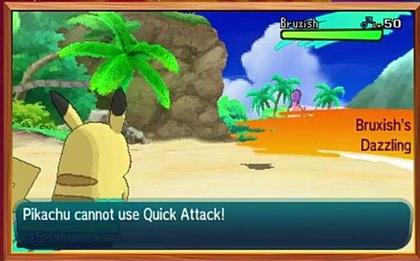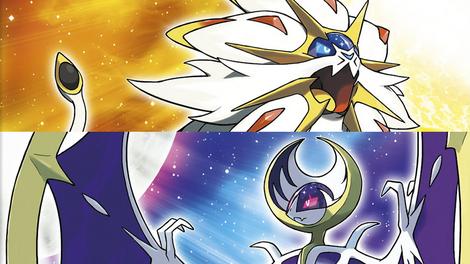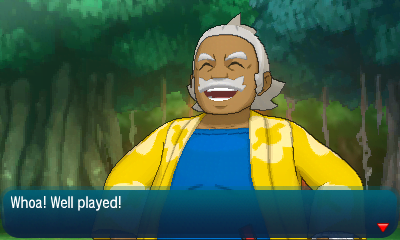Things to look out for in the coming Sun and Moon Metagame
Learn what’s likely to change in the metagame once Sun and Moon are released!
Pokémon Sun and Pokémon Moon are set to release this week, and so the seventh generation of Pokémon gaming is upon us. Every single new generation has brought with it a multitude of changes that greatly alter the landscape of the competitive metagame, and Sun/Moon is no different. Over the months since its announcement in February, official reveals and datamining leaks have given us a lot of information on the Pokémon, moves, abilities, mechanics and other things new in Sun/Moon. In this article I speculate on the possible impact some of these changes and new things may have on the metagame, things you will want to be aware of when you first delve into competitive battling in Generation VII.
Impacts to switching
In singles, success in the metagame is largely based on intelligently making and predicting switches. This is due to the fact that a single Pokémon cannot handle everything by itself, and will need to inevitably switch out. Anything that can alter this fundamental aspect is usually a big deal, such as the Ability Shadow Tag, which was banned in the Smogon ORAS metagame for negatively impacting the art of switching.

In Sun and Moon, there have been two things revealed that have an effect on switching. The first is a new Ability introduced, Stakeout, which belongs to the new Pokémon Yungoos and Gumshoos. Stakeout doubles the damage inflicted on a Pokémon switching into battle, sort of the opposite of Pursuit (a potent move in the current metagame), which does double the damage to Pokemon switching out. The more important difference here though is that Stakeout allows all moves to deal extra damage to switch-ins, making it riskier to switch anything in, creating a mindgame of whether or not the Stakeout user will predict your switch and select the appropriate move to murder your switch-in, or select the move more effective against your current Pokémon, similar to the choice of staying in or not versus a Pursuit user. Depending on how good Yungoos and Gunshoos are, and what other Pokémon get this Ability, Stakeout could be a significant threat in the metagame (or just get banned).
The other switching related thing introduced is Spirit Shackle, the signature move of Rowlet’s final form. Spirit Shackle is a Ghost type, damage-dealing move that has the added effect of preventing the opposing Pokémon from switching out (it is currently unknown if this prevents escape with U-Turn/Volt Switch/Baton Pass). Moves that prevent switching out are nothing new, but the difference here is that this one is the first to inflict significant damage (Infestation is horribly weak and only used sometimes on niche Pokémon like Shuckle and Quagsire) at the same time, and is of one of the best offensive types in the current metagame. Given that starter Pokémon tend to be popular, you will likely see this move in the opening days of the singles metagame.
Another new Pokémon has a move called Anchor Shot, basically a Steel type version of Spirit Shackle. Expect to see it in use too.
In doubles and the Video Game Competition format (VGC), switching in and out is less prevalent and less an integral part of the metagame (but still is a part of the metagame) because a Pokemon can be supported by its teammate.
Nerfs to Speed Control
Speed control is also an immensely important part of the metagame, for both singles and doubles. User Anti explained why in a previous competitive battling article:
Speed control is simply the ability to reliably go first no matter the situation.
Teams without Speed control can occasionally get run over by Pokémon who otherwise are not thought of as sweepers like Choice Specs Keldeo or even slower breakers like Mega Gardevoir or Mega Garchomp, to say nothing of their razor-thin margin for error against Speed-boosting sweepers and weather teams.
Even stall teams appreciate Speed control, whether it is a Talonflame’s Gale Wings Flying STAB or something as weak as Mega Sableye’s Fake Out. Certain Choice Scarfers find homes on stall teams as fail-safes.

There have been a number things introduced in Sun/Moon that appear to be nerfs to speed control. Two new Abilities introduced, Dazzling (native to Bruxish), and Queenly Majesty (native to Tsareena), prevent the use of priority moves by the opponent when they are on the field. Dazzling appears to specifically affect offensive priority moves, while Queenly Majesty appears to affect all moves with priority. Priority moves are a common and powerful form of speed control, as they completely ignore how fast the other Pokémon is. Pokémon like Azumarill and Talonflame are made significantly better/more useful by their access to priority moves. Lopunny and Sableye often use Fake Out to safely Mega Evolve while dealing chip damage. Even Protect, a staple of doubles, might not be usable when Queenly Majesty is in play.
Speaking of Talonflame, Gale Wings now supposedly only works when Talonflame is at full health, which hugely impacts its viability. Having priority Flying moves all the time is the sole reason it became a major threat in competitive play, and it’s difficult to have Talonflame at 100% HP every time you need priority Brave Bird/Acrobatics/Roost.
A new move, Psychic Terrain, also prevents the use of priority moves while it is active, and can be automatically generated by a new Pokemon, via its Ability Psychic Surge. Three other Pokémon are supposed to be able to generate Psychic Terrain as well.
Lastly, another common way to make moves have priority is the Prankster ability, which makes all status moves go first. However, Dark types are now completely immune to the effects of any attack that has been given priority in this way.
Outside of priority, another common method of speed control is Paralysis, as the status effect reduces the afflicted Pokémon’s Speed stat to 1/4 of what it normally is. Thunder Wave is by far the most common method of inflicting Paralysis on opposing Pokémon. However, it has been discovered that in Sun/Moon, Paralysis only reduces the Pokémon’s Speed stat by 1/2, and Thunder Wave now has 90% accuracy instead of 100%, making paralysis less effective for speed control.
Nerfs to speed control indirectly buff offense teams, as now it’s much more difficult to deal with their sheer speed.
Z-Moves

A new mechanic introduced in Sun/Moon, Z-Moves are super powerful attacks that can only be used once per battle, require that the Pokémon be holding the appropriate Z-Crystal, and are apparently linked to another move in the Pokémon’s moveset. There is one Z-Move for each of the 18 types, plus a few more exclusive to specific Pokémon (such as Snorlax’s Pulverizing Pancake). They also bust through Protect, although they will do significantly less damage.
They also can provide additional effects to the move they’re linked to. For example, if a Z-Move is linked to Belly Drum, it apparently restores the user’s HP before Belly Drum is used.
While the restrictions may be unappealing, and it will take time to learn how exactly to make the best use of how Z-Moves interact with the regular moves, the raw power, possible bonus effects, and the fact that any one Pokémon can suddenly whip out a fifth move is something that should not be ignored going into Sun/Moon.
Terrain and Weather Effects
Introduced in the previous generation were terrain effects, via three terrain moves: Grassy Terrain, Misty Terrain, and Electric Terrain. They would produce various field effects that lasted for about five turns, not unlike weather moves/Abilities or Trick Room. However, they were hardly ever used at all by both casual and competitive players in the generation they debuted in.

It seems that Game Freak noticed this, and is attempting to try to get people to use these by adding one more terrain effect (the previously mentioned Psychic Terrain), and giving each of the four island guardian Pokémon (such as Tapu Koko) an Ability that automatically generates a terrain effect. Furthermore, a few Pokémon appear to have been made to work with these terrain effects, such as Alolan Raichu and its Surge Surfer Ability. Now that there’s actual reason to use these, they may pop up in competitive play, more likely in doubles (as you can get your strategy going right from the get-go rather than wasting a turn or two switching stuff in and out to get set-up).
Weather was introduced in generation II, and reached its peak in the generation V metagame. In generation VI, it took a hit with the loss of perma-weather, but still remained as a notable part of the metagame. However, weather teams are getting some new toys to play with in Sun/Moon! The Abilities Sand Stream, Snow Warning, Drought, and Drizzle have been bestowed upon Gigalith, Vanilluxe, Torkoal, and Pelipper, respectively. All of these Pokémon were, like Politoed and Ninetales just before generation V, neglected and left to play in the lowest tiers of NU and PU. Also like Ninetales and Politoed, they now will almost certainly see usage in the upper tiers, as now there’s more options for weather summoning (you no longer have to restrict yourself to using only Politoed as an automatic rain maker, for example).
Additionally, there is a new Ability called Slush Rush, which functions as a Hail version of Swift Swim, Sand Rush, and Chlorophyll, giving Hail a chance at not being a completely garbage weather condition.
Ash-Greninja
Greninja was the most popular starter of the sixth generation, and was also a top tier threat in the XY metagame due to its high speed and Hidden Ability, Protean. In ORAS however, it gained a wider movepool due to the re-introduction of quality move tutors, and, in a somewhat controversial suspect test, was banned to Ubers. It now lives mainly as a somewhat uncommon Spikes/Toxic Spikes/Shadow Sneak suicide lead.

Making a rare reference to the Pokémon anime, Greninja has gained a new usable form in Ash-Greninja. Greninja with the new special Ability Battle Bond are able to make use of this form, which activates when Greninja KOs a Pokémon. The transformation increases its stats, and makes Water Shuriken more powerful.
While it is to initially be banned from use in WiFi battles, it will be immediately available for use in the Smogon metagame on Pokémon Showdown when the Sun/Moon metagame is implemented. Will Ash-Greninja (or even Protean Greninja) be allowed in OU? Will it be banned to Ubers, immediately or later? Is Ash-Greninja worth using over Protean Greninja, in either OU or Ubers?
Legendary Pokémon and Ultra Beasts
The legendary Pokémon featured on the boxart and in the games’ story tend to be quite powerful, often being quick-banned to Ubers, and it’s likely Solgaleo and Lunala will be quickly carted off to Ubers as well. Some of the boxart legendaries, such as Kyogre in generations 3 through 5, or Xerneas in Generation VI, have had massive impacts on the Ubers metagame. Others, like Reshiram in the XY and ORAS metagames, tend to fall into the category of “very underwhelming in Ubers, but probably too much for OU”. So how might the two newcomers fare?

Lunala is Psychic/Ghost, giving it a 4x weakness to Ghost and Dark, two excellent offensive types, meaning Darkrai, Yveltal, and Mega Gengar, major threats in ORAS Ubers, are significant problems for it, as well as having issue with less common things like Giratina-O or the occasional Shadow Sneak user. It however has the Ability of Shadow Shield, which functions like the fabled Multiscale, perhaps allowing it to act as a decent tank, provided it has the support to keep the fiends and ghosts of Ubers away.
Solgaleo is Steel/Psychic. A possibly prominent Steel type is of interest to Ubers, as the Fairy type Xerneas is rampant within the tier, and Solgaleo would resist its primary means of attack and not be weak to Focus Blast coverage. Unfortunately, Steel types were almost non-existent in ORAS Ubers, due the undisputed dominance of Primal Groudon, and, barring some sort of crazy changes in either the metagame or the game itself, Primal Groudon will likely remain the King of Ubers, making it difficult to use Solgaleo at all, let alone as a Xerneas check (especially when Xerneas and Primal Groudon are two of the most common Pokémon in the tier).
Also introduced in Sun/Moon are Ultra Beasts, a group of strange creatures whose origins and purpose are currently unknown. While it is unclear at this time what exactly they are, it has been confirmed that Ultra Beasts will be catchable by the player (apparently with some sort of special Poké Ball), implying that players can use them in battle as well, and so you will see them while battling. Their typing, abilities, and movepools are not known at this time, so it is difficult to gauge how useful they will be, but the name “Ultra Beasts” makes it sound like they have potential to be powerful.
Other Noteworthy Abilities, Moves and Changes

There have also been a handful of other interesting things revealed that one might want to keep in mind. The new Pokémon Salandit has a new Ability called Corrosion. This allows it to poison Steel types, who are normally immune to Poison.
Gengar, a potent threat in OU for several generations, has received a nerf, as it lost its usual Ability of Levitate (which was a pretty big deal for it) and now has Cursed Body, which is less useful.
The new bird with four forms, Oricorio, has a new Ability called Dancer, which lets it copy any dance move used by its opponent. Dragon Dance, Quiver Dance, and Swords Dance are all common boosting moves in the metagame, and potentially giving free boosts to your opponent’s Pokémon may make you hesitate to use them.
There’s also Alolan forms of generation I Pokémon, many of which have different typings and Abilities, and so may be more or less viable than their old forms.
As I said before, this is all speculation on my part. While we have a lot of information available, we don’t know everything yet, and we won’t until we actually get the games. There could be changes that we’re not aware of, some things might not be as good/bad as they appear, and who knows what else. It will be interesting to see how the metagame actually turns out. What do you think about the information presented here? What else do you think will make an impact on competitive battling in Gen VII?
Edited by 5qwerty, bobandbill and ddrox13.
